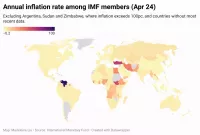The Social Security Administration (SSA) is a U.S. federal agency created in 1935 to administer Social Security, a social insurance program providing retirement, disability, and survivor benefits. Established by the Social Security Act, it initially operated as the "Social Security Board" before adopting its current name in 1946. The SSA manages the disbursement of benefits to millions of Americans, funded through payroll taxes. It plays a crucial role in the financial security of retirees, disabled individuals, and families who have lost a wage earner. The current commissioner of the SSA is Frank Bisignano.
1923: American Federation of Government Employees Local 1923
Headquarters non-supervisory employees of SSA are represented by American Federation of Government Employees Local 1923.
August 14, 1935: Signing of the Social Security Act
On August 14, 1935, the Social Security Act was signed, creating a Social Security Board (SSB) as part of President Franklin D. Roosevelt's New Deal.
1935: Social Security Act of 1935
In 1935, the Social Security Administration was established by the Social Security Act.
October 14, 1936: First Social Security office opened
On October 14, 1936, the first Social Security office opened in Austin, Texas.
1936: SSA located in Baltimore
In 1936, SSA was located in Baltimore due to the need for a building capable of holding large amounts of paper records. A suitable building wasn't available in Washington at the time.
January 1937: First Social Security taxes collected
In January 1937, the first Social Security taxes were collected, along with the first one-time, lump-sum payments.
1939: Social Security Board merged into Federal Security Agency
In 1939, the Social Security Board merged into a cabinet-level Federal Security Agency.
January 1940: First regular monthly benefits began
In January 1940, the first regular ongoing monthly benefits began being distributed.
January 31, 1940: First monthly retirement benefits check
On January 31, 1940, Ida May Fuller of Brattleboro, Vermont, received the first monthly retirement benefits check, amounting to US$22.54.
1942: Payment Centers Origins
The origins of the payment centers date back to 1942, when they were known as Area Offices. The first one was established in Philadelphia, with ones in New York, Chicago, San Francisco, and New Orleans, Louisiana, soon following.
1946: Social Security Board renamed to Social Security Administration
In 1946, the Social Security Board assumed its present name, becoming the Social Security Administration.
1953: SSA placed under Department of Health, Education, and Welfare
In 1953, the Federal Security Agency was abolished and the SSA was placed under the Department of Health, Education, and Welfare.
1960: SSA Relocated to Woodlawn Headquarters
In 1960, the Social Security Administration relocated to its newly built headquarters in Woodlawn.
1960: Flemming v. Nestor Supreme Court Ruling
In 1960, the Supreme Court ruled in Flemming v. Nestor that Social Security is not a system of 'accrued property rights' and that those who pay into the system have no contractual right to receive what they have paid into it.
1972: Introduction of Cost of Living Adjustments (COLAs)
In 1972, Cost of Living Adjustments (COLAs) were introduced into SSA programs to address the effects of inflation on fixed incomes.
1972: 1972 Amendments to the Social Security Act
Prior to the 1972 Amendments to the Social Security Act, low-income aged, blind, or disabled persons received benefits from state-run programs. The 1972 Amendments replaced these programs with the SSI program.
1974: SSA Assigned Responsibility for the SSI Program
In 1974, the SSA was assigned responsibility for the SSI program and began operations.
1975: Relocation of payment center operations to Richmond
Around 1975, payment center operations were moved out of San Francisco and across the East Bay to Richmond.
1980: Department of Health, Education, and Welfare became Department of Health and Human Services
In 1980, the Department of Health, Education, and Welfare became the Department of Health and Human Services.
1984: Exemptions for State and Local Workers Hired Before 1984
State and local government workers hired before 1984 are not required to participate in the Social Security program if they participate in a public retirement system through their employers.
1986: Medicare Coverage for State and Local Employees Hired Since 1986
All state and local government employees hired since 1986 participate in Medicare, even if not covered for purposes of Social Security benefits.
1988: Opening of the Joseph P. Addabbo Federal Building
In 1988, the Joseph P. Addabbo Federal Building opened in Jamaica.
1994: SSA returned to independent agency status
In 1994, Congress amended law and returned the SSA to the status of an independent agency in the executive branch of government.
2007: Office of Hearings and Appeals name changed to ODAR
In 2007, the Office of Hearings and Appeals (OHA) was renamed to the Office of Disability Adjudication and Review (ODAR) to better reflect that about 75% of the agency's cases involved disability claims.
2010: Social Security Benefits in 2010
In 2010, more than 54 million Americans received approximately $712 billion in Social Security benefits.
2018: SSA Employment Figures
As of 2018, approximately 60,000 people were employed by the SSA.
2019: SSI Beneficiaries in 2019
In 2019, 8 million individuals received SSI, including 1.1 million disabled children, 4.6 million disabled adults, and 2.3 million persons 65 or older.
2019: SSA Field offices served 43 million individuals
In 2019, SSA field offices served 43 million individuals.
2019: SSA field offices visits
In fiscal year 2019, 43 million individuals visited SSA field offices to apply for benefits, get a card, or receive other services.
April 7, 2022: Field offices Reopened After COVID-19 Pandemic Closures
On April 7, 2022, SSA field offices reopened after being closed for two years due to the COVID-19 pandemic.
April 2022: SSA Field Offices Reopened
In April 2022, SSA field offices reopened after being closed for two years due to the COVID-19 pandemic.
2022: SSA expected to pay out Social Security and SSI benefits
In fiscal year 2022, the SSA expected to pay out $1.2 trillion in Social Security benefits to 66 million individuals and $61 billion in SSI benefits to 7.5 million low-income individuals.
2024: BabyCenter reports on baby naming trends
In 2024, BabyCenter analyzed data from over 500,000 parents who actively registered births on their site and app to show naming trends in real time, publishing emerging trends and annual rankings months ahead of the SSA's official release.
April 2025: False Listings in Database of Dead People
In April 2025, under the Trump administration, the Social Security Administration falsely listed over 6,000 living immigrants in their database of dead people. Greg Pearre was put on leave for objecting.
August 2025: Whistleblower Complaint and Resignation
In August 2025, a whistleblower filed a complaint about unsecured Social Security information and resigned after an alleged hostile work environment.
2025: Repeal of the Windfall Elimination Provision (WEP) and Government Pension Offset (GPO)
Prior to 2025, individuals with careers in both covered and non-covered employment might have had Social Security benefits reduced. However, this was abolished with the passage of the Social Security Fairness Act.
Mentioned in this timeline

San Francisco is a major commercial financial and cultural hub...

Inflation in economics signifies an increase in the average price...
Jamaica is an island country located in the Caribbean south...

Chicago is the most populous city in Illinois and the...

New Orleans is the most populous city in Louisiana and...

Philadelphia or Philly is Pennsylvania's most populous city and the...
Trending

3 months ago ATP Basel Day 2 Predictions: Wawrinka vs Kecmanovic, Mpetshi Perricard vs Fonseca
3 months ago Lindsey Halligan's Signal exchange with Anna Bower revealed, leading to controversy and publication.

7 months ago Mirra Andreeva vs. Yulia Putintseva at French Open; Putintseva Advances to Second Round
2 months ago Typhoon Kalmaegi Devastates Philippines: Hundreds Dead, Another Storm Threatens Hope

9 months ago Brandon Williams' Injury Fuels Mavericks' Playoff Fears; Comes off Bench in Game

7 months ago Klay Thompson Mourns Beloved Bulldog Rocco: A Heartfelt Tribute on Social Media.
Popular

Stranger Things created by the Duffer Brothers is a popular...

XXXTentacion born Jahseh Dwayne Ricardo Onfroy was a controversial yet...

Kelsey Grammer is an accomplished American actor producer and singer...

Candace Owens is an American conservative political commentator and author...

Bernie Sanders is a prominent American politician currently serving as...

Melania Trump a Slovenian-American former model has served as First...